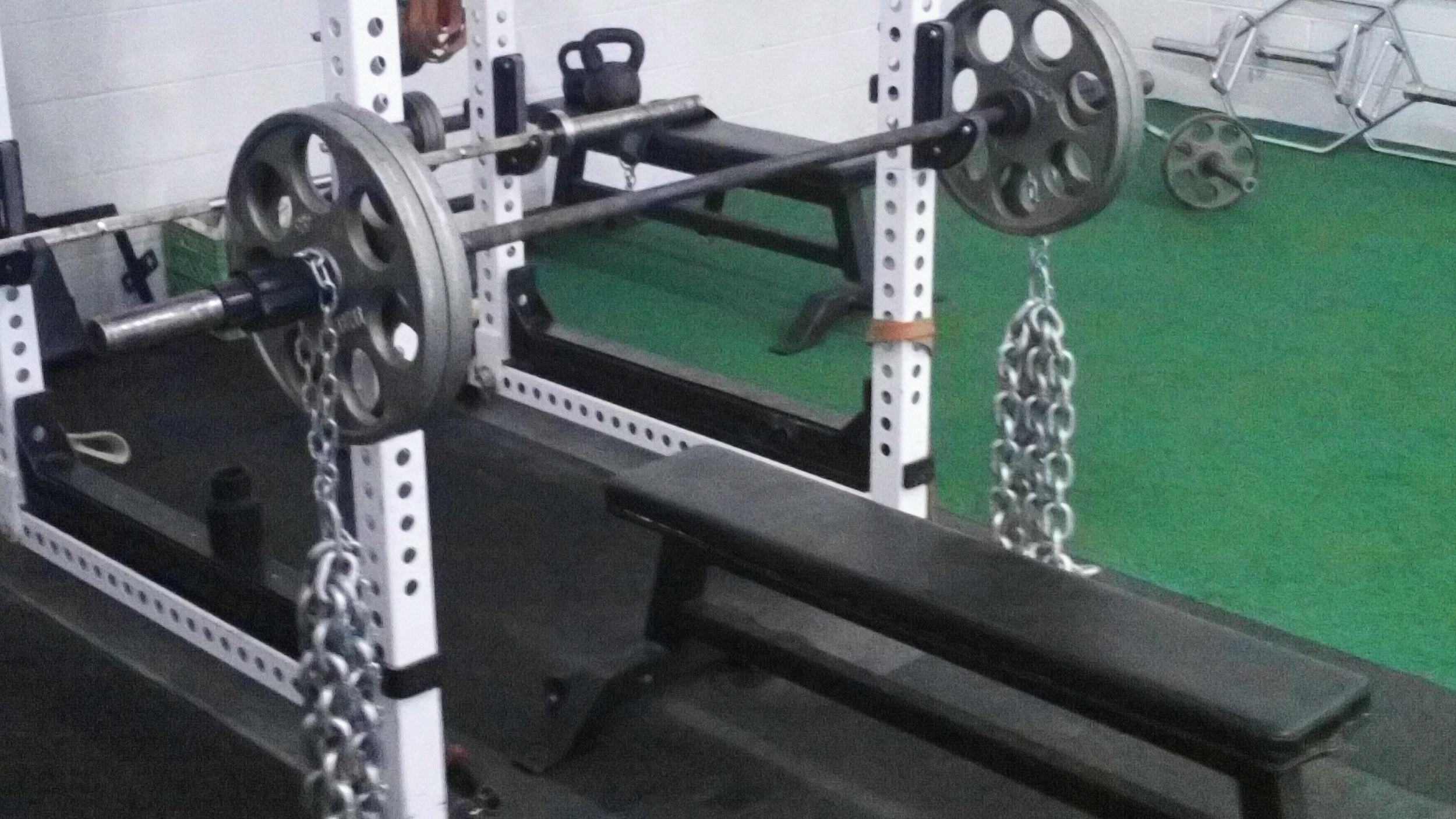Continued from Part I So after bucket-loads of pills, rest, e-stim, physical therapy, decompression treatment, chiropractic adjustments, and acupuncture I was still a mess. My pain had only gotten worse over the course of 6-7 months. What was the next step?
Steroids
I was referred to another doctor, this time a pain management specialist. I gave him the story that I’ve been repeating over and over to the other health care professionals. He took notes, reviewed my MRI and my treatment history, and decided the next step was to try an oral steroid treatment. Before you shake your head in disappointment and disdain, understand that we aren’t talking about anabolic steroids (I doubt those would have helped me much). The treatment consisted of 10 days of a corticosteroid drug, specifically Prednisone, in a hardcore attempt to kill the inflammation in my spine. The doc was straight up with me and told me that there’s a chance it will help but it’s a far cry from a guarantee. He wrote me the prescription and warned me of the side effects:
-High blood glucose
-Fluid retention
-Insomnia
-Anxiety
-Weight gain
-Severe facial swelling
-Fatigue and weakness
-Mental confusion
-Steroid dementia syndrome
-Infection
-Joint pain
-Blurred vision
-Acne
-Depression, mania, or psychosis (wait… what?!?!)
I followed the directions closely and took the pills everyday for ten days. The dosage started high and tapered down throughout the duration. I can’t say I felt much of a difference throughout that time. The pills didn’t make me feel better at all, but I didn’t get any noticeable side effects either.
So soon after that I’m back in the doctor’s office to see what the next step is. We agree that something more invasive needs to be done, but not surgery… yet. He suggests an epidural steroid injection. An epidural injection does not “fix” the issue of the blown up intervertebral disc, but can provide lasting relief for anywhere from a few weeks to a year or more. In combination with a solid rehabilitation program, many patients have had great success with these injections.
A few weeks after the oral steroid treatment, I’m in the doctor’s office ready for my first injection. It was definitely a scary thought, the idea of an enormous needle driven right into your lower back, but I was a desperate man ready to take desperate measures.
They provided some local anesthetic to my lumbar region, and proceeded to stab me in the spine with a Super Soaker of a syringe. They warned me that it would hurt, and it did. I felt an extreme sense of pressure in my lower back, as if an elephant stepped on it, followed by intense pressure down my left leg. When I got off the table to stand up I almost collapsed, because my left leg was still numb. They told me this was normal and that I should regain the feeling in my leg in a couple hours.
The pain in my back and down the leg at this time wasn’t completely gone, but it was significantly dulled. I remember feeling a sense of hope, that I was FINALLY on the path to recovery. The dulled pain continued for a few days, but then slowly started creeping back. I called the doctor with concern, but he let me know that sometimes it actually takes a couple weeks for the drugs to kick in 100%, so I should give it time.
Over the next two weeks I remember trying to ignore the fact that the pain was coming back, but after a few days of waking up to the full blast pain that I felt before, I went back to the doctor. He recommended a second injection. The second injection was just as pleasant as the first one, and left me numb for a day. This time the doctor also wrote me a prescription for Cymbalta.
“An anti-depressant?!” I asked. I mean this injury is depressing for sure but c’mon doc.
He explained to me that the drug is a seratonin-norepinephrine reuptake inhibitor (SNRI) and that yes, it is used to treat clinical depression but also to treat peripheral nerve pain. Reluctantly I took the prescription and took about a weeks worth. I quit after that first week because I felt like it wasn’t helping and I was becoming paranoid about the dictionary-sized list of associated mental side effects.
The dulled pain lasted about three days this time and immediately returned. After another couple weeks I came back for injection round three. The limit for these injections is three per year, and I reached this limit within a couple months. These injections definitely aren’t child’s play and you can’t haphazardly just shoot them up into your spine whenever you want to. With each injection you run the risk of infection, dural puncture, nerve damage, and even joint degeneration in the long run!
This time the doctor wrote me a prescription for Gabapentin as well. Gabapentin, also known as neurontin, is a drug used to treat epilepsy but has been successful in treating neuropathy as well. Apparently it’s also a popular recreational drug because of its potential psychoactive effects. What is this doctor feeding me?!
Anyways, after three injections and a bunch of sketchy drugs, I was back to square one. No relief. When I came back to the doctor I already knew what they were going to tell me: “We’ve exhausted all of our options and it may be time to consider surgery.”
The Surgeon
My girlfriend, who works at INOVA, did some digging on several reputable orthopaedic surgeons in the area. After consultations with three different surgeons, I decided to go with Dr. Thomas Schuler of Virginia Spine Institute.
As one of the top 100 spinal surgeons and specialists in the country, recognized among the top 1% of physicians in his specialty, and top 10 spinal surgeons for the NFL, his reputation preceded him. Being the spine specialists for the Washington Redskins had nothing to do with my decision… I think…
During the consultation at his office, he and his assistants spent almost two hours of dedicated time with me, running me through a myriad of tests, looking through my records, performing another x-ray on my spine, and analyzing my MRIs.
When it was all said and done, he was confident that a microdiscectomy would be the way to go.
A micro-what now?
The plan was to perform a “micro-surgery” that was relatively minimally invasive: The doc would slice into my lower back, push the erectors out of the way, cut some bone away from the lamina of the vertebrae, find that insidious piece of disc that was pushing on my sciatic nerve and ruining my life, decapitate the herniation, and stitch me back together.
Terrifying… I thought. “Let’s do it,” I said. My consultation was on a Thursday, and the operation was scheduling for the following Monday.
The Surgery
Like almost everything in life, the operation came with a bunch of paperwork. I filled out all my papers, signed a will (yeah, really), and they sent me home with my pre-op packet filled with instructions.
There wasn’t much to do from my end pre-op. I couldn’t eat or drink anything the night before and had to shower with a special soap.
The next day I showed up at the hospital, checked in, and waited in the waiting room with a number of other poor souls like myself that were about to get cut open. When I was called up they prepped me up in a gown and surgical socks and rolled me away on a bed to the anesthesiologists.
The anesthesiologist prepared the IV and stuck it into my arm. She explained that she would soon inject the drug and I would fall into a deep sleep. I remember her asking me where I went to school, to which I replied “George Masgfughabluhhhhhhh…” BAM! I was out like a light!
After what seemed like a minute or two, I slowly woke up, very hazy. One eye half-open, I looked up at a nurse and asked “when are they taking me to surgery?” She chuckled and replied “Oh honey, you’ve been out of surgery for hours. It went perfectly!” I didn’t want to argue so I went back to sleep.
The second time I woke up I was in the recovery room with my girlfriend and family. After the blur started to wear off I realized that the intense pain in my back and left leg were gone. I was so happy I could’ve cried. Pain had become such a huge part of my life that I forgot what it was like to not be in agony. I was definitely sore from the flesh wound I now had in my back but it was merely a slight discomfort compared to how I’d been living that past year.
I spent the night there, still in a daze from the morphine and eating French toast while watching The Simpsons. It was definitely one of the most joyous days of my life.
Stay tuned for Part III!













